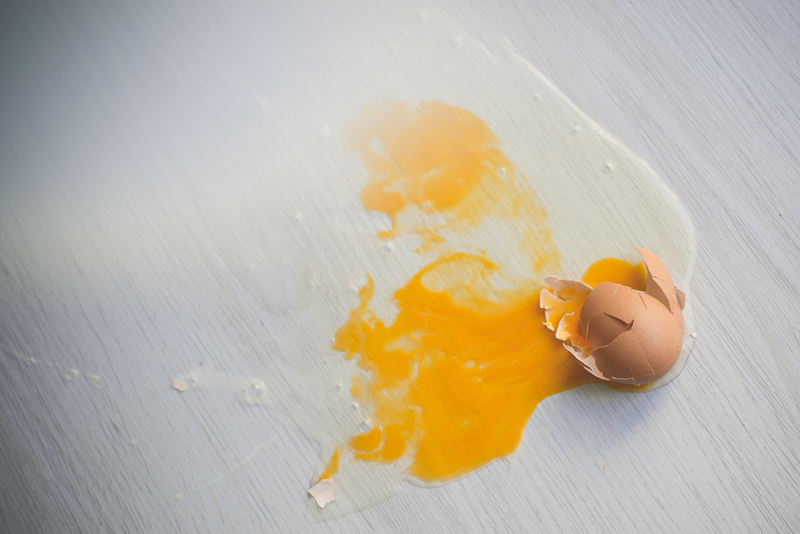Revitalize Your Home by Addressing Damp Smell
Posted on 27/08/2025
Revitalize Your Home by Addressing Damp Smell: A Comprehensive Guide
A fresh-smelling, inviting home is everyone's dream, but a persistent damp smell can disrupt comfort and even pose health hazards. In this guide, you'll learn how to identify, eliminate, and prevent musty odors, allowing you to revitalize your home and preserve its value and comfort.
Understanding the Origins of Damp Smell
Before you can successfully remove the musty odor, it's essential to understand what causes that telltale damp smell. Knowing the source ensures you're eliminating the problem, not just masking the scent.
What Causes Damp Smells in your Home?
- Mold and mildew growth: The release of spores and microbial volatile organic compounds (MVOCs) by mold and mildew is a primary cause of that earthy, stale aroma.
- High indoor humidity: When the relative humidity stays above 60%, organic materials like wood, fabrics, and wallpaper can absorb moisture and develop unpleasant scents.
- Water leaks: Plumbing problems, roof damage, or foundation cracks can let water into hidden building cavities, creating a breeding ground for dampness.
- Poor ventilation: Stagnant air allows moisture and odor particles to accumulate rather than be replaced by fresh air.
- Basement or crawl space issues: Below-ground spaces are notorious for being chronically damp, especially if drainage and waterproofing are insufficient.
Why Addressing Damp Smell is Vital
- Health risks: Prolonged exposure to musty odors and mold can trigger allergic reactions, asthma, or even chronic respiratory issues.
- Property value: A lingering damp scent can reduce your home's appeal and value if you plan to sell.
- Structural damage: Persistent moisture can weaken foundations, woodwork, and compromise insulation over time.

How to Detect the Source of Damp Smell
Locating the exact origin of the damp odor ensures that your remediation efforts are effective. Use your senses and a methodical approach:
- Sniff test: Walk through your home and take note of the intensity and location of the odor. Is it stronger in the basement, bathroom, or near exterior walls?
- Visual inspection: Look for visible mold, mildew, water stains, discoloration, or peeling paint on walls and ceilings.
- Feel for dampness: Touch surfaces and materials. Wet patches or damp carpets are red flags.
- Use moisture meters: For tricky spots, use a moisture detector to test drywall, flooring, or wood for hidden dampness.
- Check less frequented areas: Cabinets under sinks, behind appliances, inside closets, attics, and crawlspaces are common hiding spots for moisture issues.
Revitalize Your Home: Steps to Remove Damp Smell
Once you've identified the cause, you can begin the process to eliminate musty odors at the source and freshen your living space.
1. Remove Damp Materials
- Discard items: Porous materials (old carpets, insulation, fabric furniture) that are heavily affected should be discarded as they can harbor mold spores difficult to remove.
- Clean washable fabrics: Machine wash curtains, bedding, and textiles with a cup of white vinegar to neutralize odors.
2. Clean and Disinfect Affected Areas
- Hard surfaces: Scrub with a mixture of water, dish soap, and white vinegar or baking soda to remove mildew and neutralize scents.
- Bathrooms and tiles: Use hydrogen peroxide or a mold cleaner for shower grouting and hard-to-reach corners.
- Carpets: Sprinkle with baking soda, let sit for 30 minutes, then vacuum. For persistent smells, consider professional steam cleaning.
3. Improve Airflow and Ventilation
- Open windows and doors: Allow fresh air to circulate, pushing out stale air and moisture.
- Install exhaust fans: Ensure that bathrooms, kitchens, and laundry rooms have working exhaust fans that vent outside.
- Use ceiling or portable fans: Create air movement, especially in stuffy areas.
4. Reduce Indoor Humidity
- Dehumidifiers: Essential for areas like basements or poorly ventilated rooms. Keep humidity below 60% to discourage mold growth.
- Air conditioners: These can also help regulate humidity alongside cooling your interior.
- Houseplants: Choose moisture-absorbing varieties, such as peace lilies or Boston ferns, to help manage humidity naturally.
5. Seal Leaks and Waterproof
- Inspect plumbing: Fix leaks under sinks, behind appliances, and near water heaters as soon as possible.
- Repair roof and gutters: Damaged roofing or clogged gutters can let water enter and accumulate inside walls or ceilings.
- Waterproof basements and crawlspaces: Add vapor barriers, improve drainage, and seal cracks to prevent water intrusion.
6. Use Natural Odor Absorbers
- Charcoal bags: Activated charcoal is highly effective at absorbing both odors and moisture.
- Baking soda: Place open containers in affected areas to neutralize musty scents.
- Vinegar bowls: Leave bowls of white vinegar in musty rooms overnight to absorb odors.
- Essential oils: Add a few drops of antimicrobial oils (like tea tree or eucalyptus) to diffusers for a fresh scent.
Preventing Future Damp Smells: Maintenance Tips
Prevention is always better than cure. Regular maintenance can keep your home free from damp odors and create an environment that feels and smells fresh.
Regular Home Inspections
- Annual checks: Inspect basements, attics, and crawl spaces for signs of leaks or water damage every year.
- Maintain seals: Check caulking and sealant around showers, bathtubs, and windows; replace as needed.
- Monitor foundation: Watch for cracks or shifting, which can allow water in.
Consistent Cleaning Habits
- Ventilate while cleaning: Open windows or use a fan during and after cleaning activities that create moisture, like mopping floors or washing windows.
- Dry wet clothing promptly: Never leave damp clothes or towels in the washing machine or bathroom.
- Use moisture-absorbing products: Place desiccant packs in closets, under sinks, and in storage boxes to keep contents dry.
Upgrade Your Home's Ventilation
- Install air exchangers: These systems replace stale indoor air with fresh outdoor air, reducing dampness and improving air quality.
- Check attic ventilation: Proper attic vents prevent moisture buildup, protecting your roof and the rest of your home.
- Consider smart HVAC: Modern HVAC systems can control both temperature and humidity, making it easier to keep your home fresh-smelling.
Address Outdoor Drainage
- Clear gutters and downspouts: Redirect water away from your foundation.
- Landscaping solutions: Use soil grading or install French drains to ensure water doesn't pool near your home's base.
- Install window well covers: Prevent rainwater from seeping into below-grade living areas.
Common Mistakes to Avoid when Trying to Remove Damp Smell
Some actions can unintentionally worsen the situation or only offer a temporary fix. Avoid these pitfalls:
- Masking the odor: Overusing air fresheners or candles simply covers up the musty scent without addressing its origin.
- Neglecting hidden areas: Focusing only on obvious spots may allow hidden moisture and mold to persist.
- Ignoring small leaks: Even minor drips can support mold growth over time if left unchecked.
- Delaying repairs: Putting off waterproofing or plumbing fixes can dramatically increase long-term damage and costs.
- Misusing bleach: On porous surfaces like wood and drywall, bleach can actually encourage mold regrowth after evaporating.

Frequently Asked Questions: Eliminating and Preventing Damp Smell
How long does it take to get rid of a damp smell?
It depends on the severity and source. Simple moisture removal might clear the air in hours, but addressing mold infestations and underlying leaks may take several days to weeks of cleaning, drying, and repairs.
Are musty smells harmful to health?
Yes - chronic exposure can trigger allergies, worsen asthma, and contribute to sinus infections. Address damp smells urgently to protect your family's well-being.
Can houseplants help eliminate damp smells?
Some houseplants absorb moisture and purify the air, slightly reducing minor household humidity, but they cannot replace mechanical ventilation or dehumidifiers for serious problems.
Do I need to hire a professional?
If you identify a large outbreak of mold, serious structural leaks, or health symptoms, it is wise to consult mold remediation experts or water damage restoration professionals.
What are the best products for removing damp smell?
- Dehumidifiers
- Enzyme cleaners
- Vinegar and baking soda
- Activated charcoal bags
- HEPA air purifiers
Conclusion: Embrace a Fresh Start
Revitalizing your home and addressing damp smell doesn't just restore pleasantness; it protects your family and enhances your property as a haven of healthy living. By proactively detecting, eliminating, and preventing unwanted humidity and musty odors, you embrace a cleaner, fresher environment.
Prioritize these practical steps and home care habits, and your living space will remain free from musty, damp odors for years to come. For stubborn or severe cases, don't hesitate to call in professionals; your health, comfort, and peace of mind are worth the investment.





